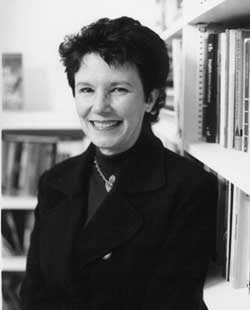Helping Non-native Speakers Write Academic English
Software that taps emotions and explicates a mysterious process
by Suzanne Guillette
During a recent social studies class at a Bronx middle school, seventh graders were using a new software program developed by faculty at Teachers College to conduct research for an essay on civil rights. Maryam (not her real name), a seventh grader from the Dominican Republic, grew increasingly angry as she viewed images of the Star of David identification badges that Jews were forced to wear in public under Nazi rule.
“That would be like me having to wear something because I’m Dominican!” she exclaimed.
It’s no secret that students learn more, and more effectively, when they care about the material. But motivating them to write essays can be a challenge of a different order, even with a topic as emotionally resonant as the Holocaust, and particularly when, like Maryam, they must do so in a language other than their native tongue.
Enter the Teachers College software, a multimodal web-based program called STEPS to Literacy: An Integrated Digital Writing Space for English Language Learners. Developed by Jo Anne Kleifgen, Professor of Linguistics and Education, and Chuck Kinzer, Professor of Communication, Computing and Technology, STEPS to Literacy was funded by a three-year, $1.5 million grant from the U.S. Department of Education.
“Our work is based on real need,” says Kleifgen. “There are lots of children whose home language is different from English who aren’t succeeding academically.” For example, among all eighth graders who speak English as a second language, only 4 percent are proficient readers.
Students learning English are often particularly challenged by what Kinzer calls a major component of academic writing: “finding relevant, disparate sources and synthesizing the material in meaningful ways to create a structured, logical argument.” To aid in this process, Kleifgen and Kinzer have built their software around a framework, developed earlier by Kinzer and colleagues, called STEPS plus G, which encourages students to learn about and discuss the scientific, technological, economic, political, social and geographic aspects of a given subject.
The STEPS to Literacy program includes a series of learning modules devoted to these conceptual categories, each of which begins with an “anchor video” that provides a context for topics that students learn and write about. Students can then use STEPS to Literacy to explore a variety of resources: photos, audio and video, and written materials, including transcripts, many of which are available in both English and Spanish. The interface allows students to keep all materials open onscreen while writing. Students also can work in their native language to grasp concepts, form ideas and create notes and drafts before writing a formal draft in English.
During the first year of its development, STEPS to Literacy was piloted at Maryam’s Bronx middle school. More recently, Kleifgen, Kinzer and their team of TC students have conducted testing at additional schools in Harlem.
While the initial focus of STEPS to Literacy has been on social studies, Kleifgen and Kinzer hope to expand the program to support learning across disciplines, beginning with science.
“Writing in any subject area can be daunting because the process can seem mysterious,” Kinzer says. “STEPS helps to explicate the thinking involved, and it creates a way to tap learners’ emotions and experiences.” And that, as the expression goes, seems worth writing home about.
Published Wednesday, May. 2, 2012
